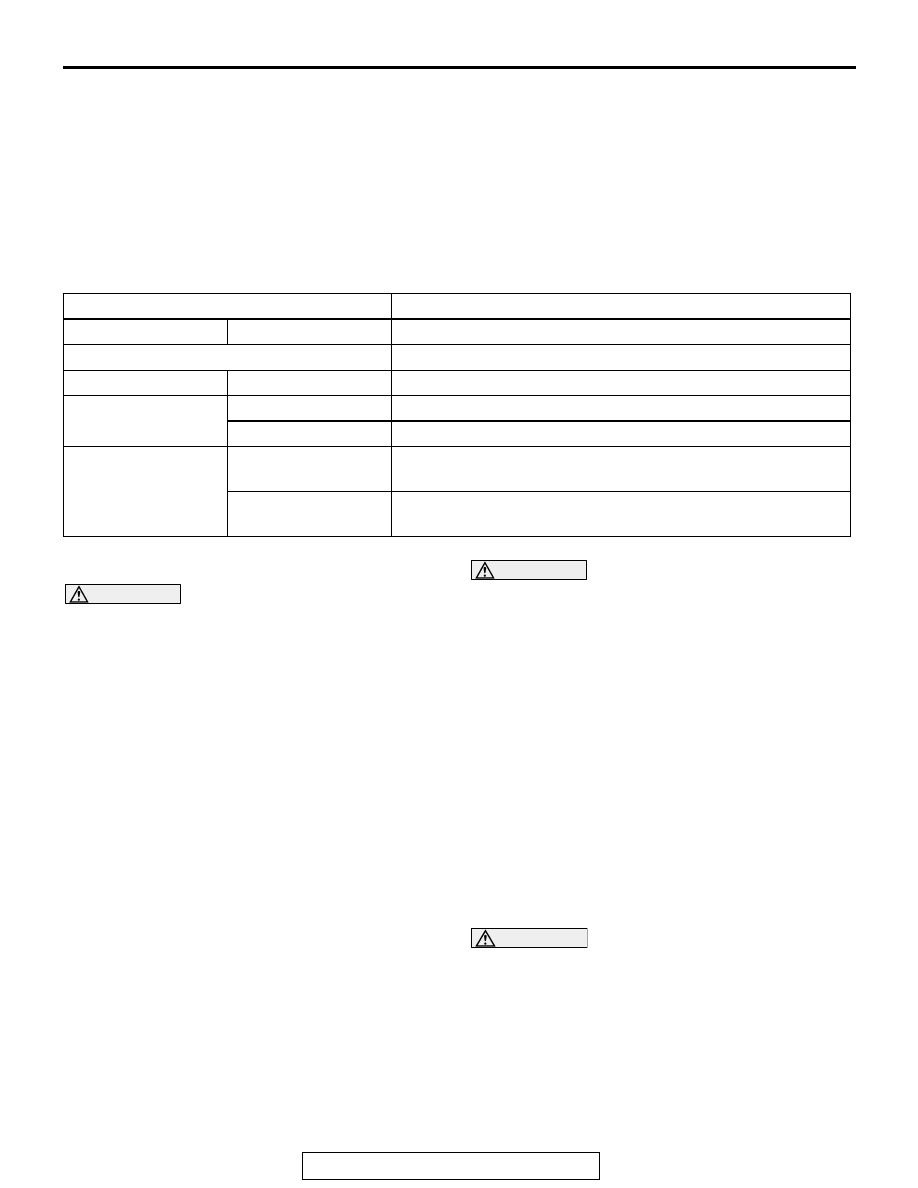Mitsubishi Montero (2002-2004). Manual - part 35

GENERAL DESCRIPTION
TSB Revision
HEATER, AIR CONDITIONING AND VENTILATION
55A-3
.
GENERAL DESCRIPTION
M1551000100080
The heater system uses a two-way-flow full-air-mix
system that features high performance and low oper-
ating noise. The air conditioning (A/C) system is
basically the same as the conventional system, but a
new refrigerant system has been adopted as a
response to restrictions on the use of chlorofluoro-
carbons.
SAFETY PRECAUTIONS
WARNING
Wear safety goggles when servicing the
refrigeration system to prevent severe dam-
age to hands.
Because R134a refrigerant is a hydro fluorocarbon
(HFC) which contains hydrogen atoms in place of
chlorine atoms, it will not cause damage to the ozone
layer. Ozone filters out harmful radiation from the
sun. To assist in protecting the ozone layer,
Mitsubishi Motors Corporation recommends an
R134a refrigerant recycling device. Refrigerant
R134a is transparent and colorless in both the liquid
and vapor state. Since it has a boiling point of
− 29.8
°C(− 21.6 °F) at atmospheric pressure, it will be a
vapor at all normal temperatures and pressures. The
vapor is heavier than air, non-flammable, and non-
explosive. The following precautions must be
observed when handling R134a.
WARNING
Do not heat R134a above 40
°C (104°F) or it
may catch fire and explode.
R134a evaporates so rapidly at normal atmospheric
pressures and temperatures that it tends to freeze
anything it contacts. For this reason, extreme care
must be taken to prevent any liquid refrigerant from
contacting the skin and especially the eyes. Always
wear safety goggles when servicing the refrigeration
part of the A/C system. Keep a bottle of sterile min-
eral oil handy when working on the refrigeration sys-
tem.
1. Should any liquid refrigerant get into the eyes, use
a few drops of mineral oil to wash them out.
R134a is rapidly absorbed by the oil.
2. Next splash the eyes with plenty of cold water.
3. Call your doctor immediately even though irritation
has ceased after treatment.
CAUTION
Keep R134a containers upright when charging
the system.
In most instances, moderate heat is required to bring
the pressure of the refrigerant in its container above
the pressure of the system when charging or adding
refrigerant. A bucket or large pan of hot water not
over 40
°C (104 °F) is all the heat required for this
ITEMS
SPECIFICATIONS
Heater unit
Type
Two-way-flow full-air-mix system
Heater control assembly
Dial type
Compressor
Model
10S17C
Dual pressure switch
kPa (psi)
High-pressure switch ON to OFF: 3,140 (455.5), OFF to ON: 2,550(369.9)
Low-pressure switch ON to OFF: 196 (28.4), OFF to ON: 223 (32.4)
Refrigerant and
quantity g (oz)
Vehicles without rear
A/C or rear cooler
R134a (HFC-134a), Approximately 530
− 570 (18.7 − 20.1)
Vehicles with rear A/
C or rear cooler
R134a (HFC-134a), Approximately 730
− 770 (26.1 − 27.1)